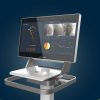Too small to see with a human eye, nanoscale-engineered materials and devices are opening up significant new areas of medicine and empowering advancements in diagnosis, treatment and prevention. Nanoparticles are being developed that leverage nanoscale design and manufacturing capabilities to enable multiple functions including the detection and killing of malignant cancer cells, local delivery of drugs, heat, light or combinations of therapeutics. Various nanoparticulate architectures can include a cargo of medicines such as antibiotics for targeted delivery in tackling drug-resistant infections, and nanotechnology is revolutionizing wound care, with nanoparticles and nanomaterials inducing clotting and lowering internal bleeding.
Many U.S. medtech and pharmaceutical companies are expanding their offerings by employing what’s being called nanomedicine, performing major research in facilities around the world. In recent years, these companies have been going overseas to achieve these medical breakthroughs.
Brendan Bonner, chief technologist in technology, content and business services at IDA, the Irish government’s foreign direct investment arm, says he’s witnessed nanomedicine ramping up significantly over the past five years. He points to projects such as the development of Pfizer’s successful drug Rapamune, based on nanocrystals, which is an immunosuppressive agent for patients with transplanted kidneys. “Carbon-based nanomaterials to address peripheral nerve injuries is the research focus of Integra LifeSciences from New Jersey working with the Advanced Materials and BioEngineering Research center in Dublin, Ireland,” says Bonner. “Johnson & Johnson, on the other hand, is teaming with Irish researchers on miniscule 3-D scaffolds synthesized to play a role in tissue engineering in regenerative medicine,” he adds. These exciting programs underscore explosive projections for the future of nanomedicine, which is predicted to surpass $435 billion worldwide by 2028.
One example of an academic institution working with U.S. companies is Tyndall National Institute, one of Ireland’s national laboratories. According to Carlo Webster, senior strategic business development executive at the institute, Tyndall is teaming with U.S. companies on the new frontier of medtech development. A tier-one European research lab, Tyndall combines its research and facilities for micro-nanoelectronics and photonics design, fabrication and testing, with its knowledge in digital health-tech. “Research in nano-enabled technologies has facilitated the development of personalized therapies, cures and preventions,” he says. “These technologies allow researchers to create devices and systems including organ-on-chip, closed-loop diagnostic and therapeutic systems, smart wound care, smart catheters, smart sensor probes and needles, as well as smart implantables and pill technology.”
Illinois-based Endotronix, for example, combines wireless implantable nanosensors with remote patient management to improve patient care and outcomes for heart failure patients. In 2019, Tyndall at UCC and Endotronix teamed to research implantable sensors for chronic diseases. Since then, Endotronix in-house-developed implantable devices have been involved in three clinical trials beginning in 2019 after achieving FDA approval, the 100th of these miniscule sensors had been implanted as of March 2021, enabling cardiologists to remotely titrate medications and thus produce better patient experiences and results.
Another U.S. company, Tennessee-based DeRoyal Industries, began its R&D in Ireland in 2020. Working with partners RCSI, Henkel and Design Partners, DeRoyal’s project focuses on compression wound care utilizing Tyndall’s expertise in micro-nanoelectronics. New devices are much needed to accelerate wound healing and to facilitate remote and continuous monitoring of wounds. There are ingenious ways that nano-enabled technology can treat wounds such as integrating nanoelectronics that produce electric pulses that can speed up the healing process. In the United States, the chronic wound care market is projected to reach $16.36 billion by the end of 2027.
A growing number of the leading medtech and biopharma companies—including a large contingent of U.S. firms—are moving toward nanomedicine-enabled digital health-tech as the promising new frontier in effective patient care, and some companies are doing so via their Irish operations. They are among the many companies located in Ireland such as Johnson & Johnson, Boston Scientific, Medtronic, Integer, Stryker, Abbott, B. Braun, Allergan, Merck, Aspen, Amgen, Eli Lilly, Regeneron, Abbvie and others. The funding opportunities and chance to collaborate with leading scientists and research institutes available in Ireland and elsewhere in the EU are compelling for health-related firms. EU funding such as Horizon Europe, R&D grants and a 25% R&D tax credit are also available to U.S. companies.
The reason why U.S. companies align with Irish academia so well is because of a like-minded business outlook (e.g., Tyndall’s focus is to carry out research excellence to commercialization).
According to Webster, “Scientists want their research to deliver impact by making its way to the marketplace. One of the best approaches to ensure that happens is to ensure close links with industrial partners. Fundamental research is carried out by research institutes with innovations from Technology Readiness Level (TRL) 1 to 3. Collaborative research is usually performed from TRL 3 right through to TRL 7, where industry takes responsibility, industrializing it at TRL 8 so that it becomes commercially available to the mass market at TRL 9.
“Industry engagement is an important element of the Irish research ecosystem to ensure that innovation is industry informed and technology can scale, reach end users and thereby create impact on the world,” he adds. “Scientists in Ireland have many opportunities to engage with top U.S. companies that have operations in Ireland. Overall, U.S. firms find this ecosystem with on-the-ground support a very attractive option to support global R&D strategies driving future innovation.“







